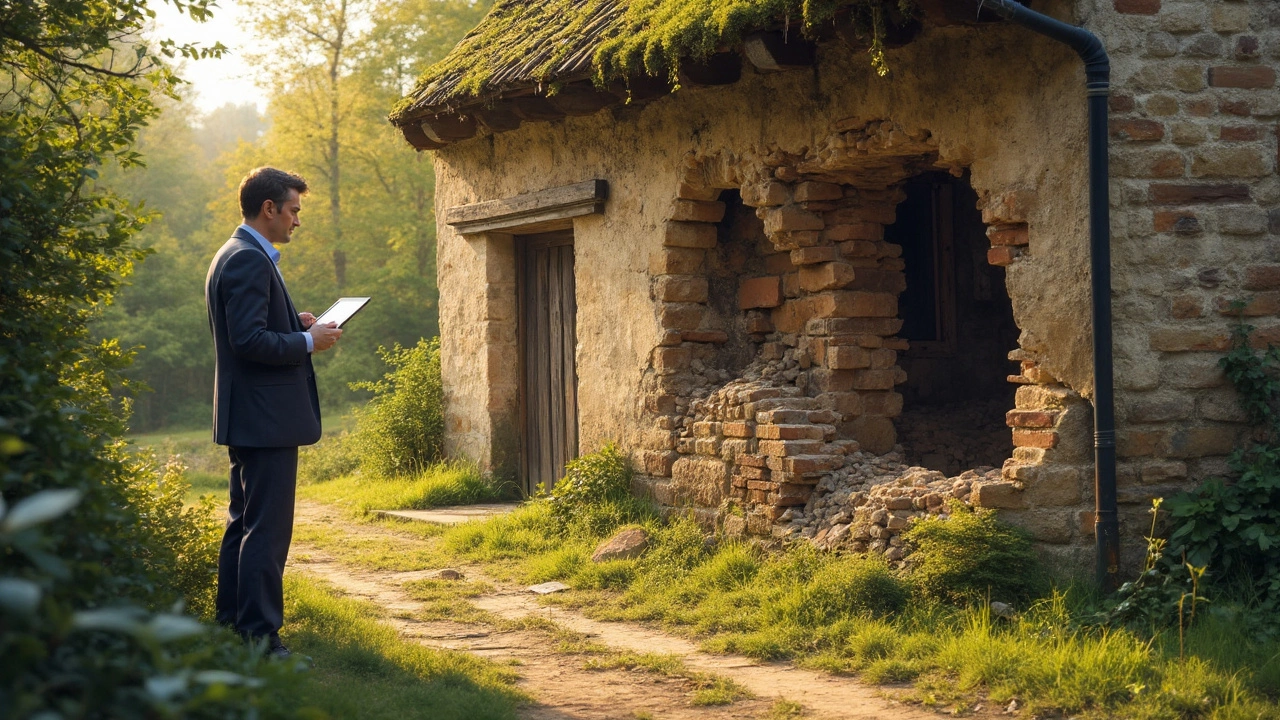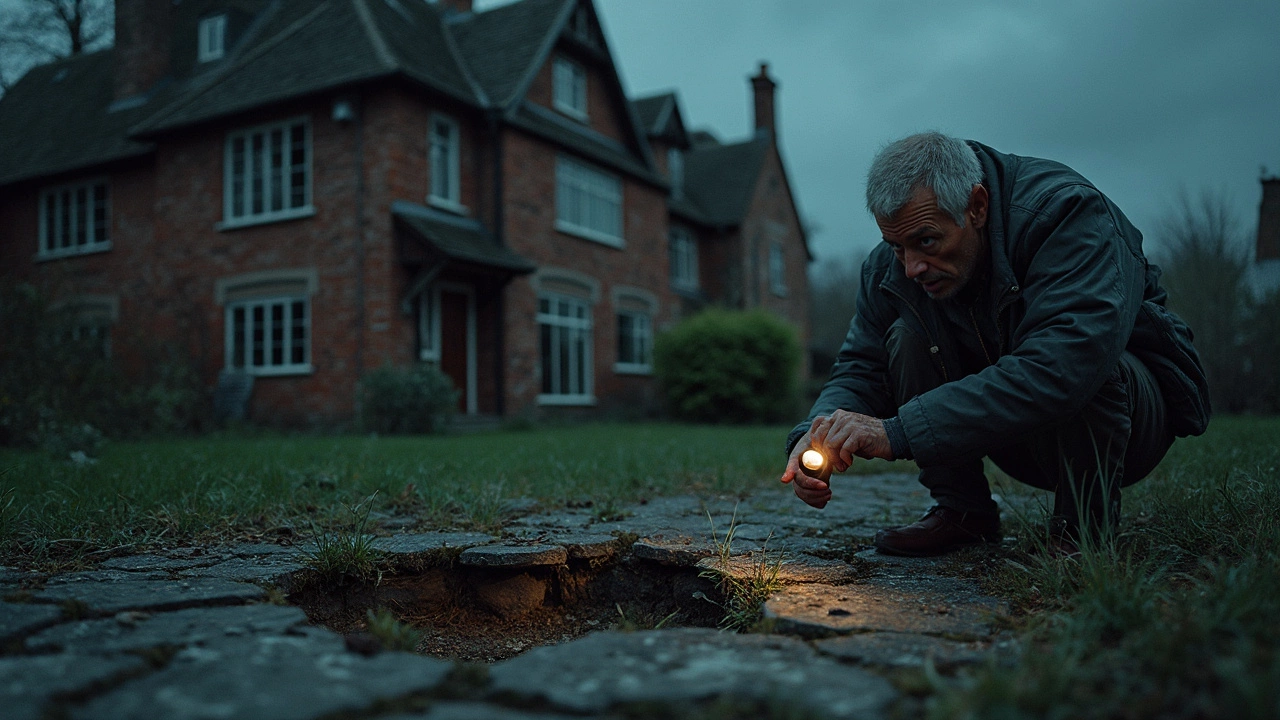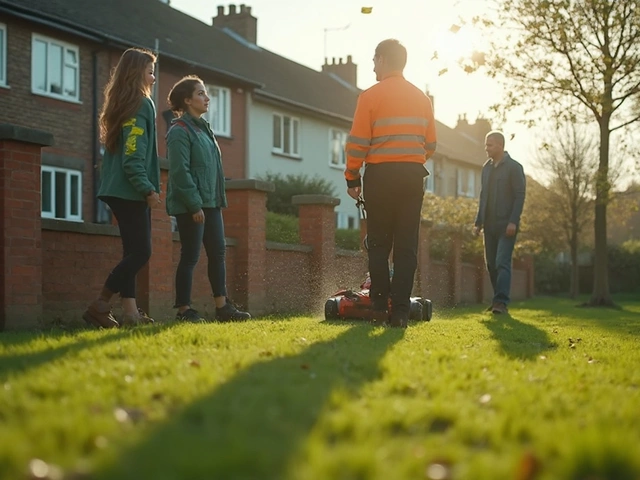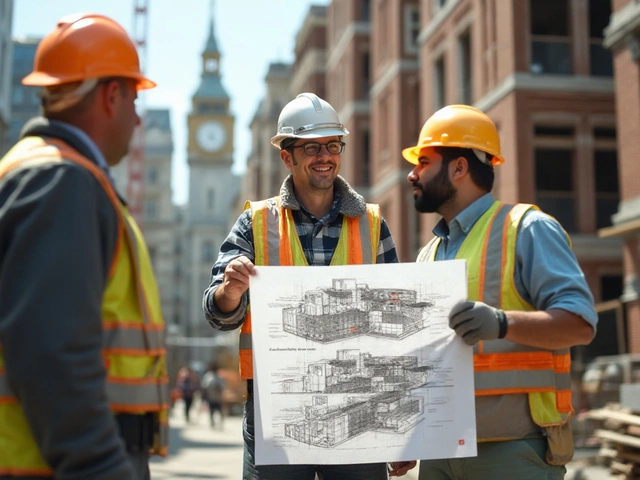Ever wondered if a home's foundation could be completely beyond repair? It's a pretty scary thought for anyone who owns property. The foundation is like the backbone of your house, keeping everything stable and standing tall. But, is it possible for things to go so wrong that fixing it is just out of the question?
First things first—understanding the basics about your foundation is crucial. It's not just about having a fancy basement or knowing you live on a concrete slab. It involves knowing what holds your home together and ensures it won't budge. So, what does a bad foundation actually look like?
If you start seeing cracks in walls, uneven floors, or doors that won't shut properly, these might be red flags waving at you. These are signs that need attention, and fast. The longer you wait, the worse it might get, costing you more in the long run. But when does a troubled foundation cross over into unfixable territory?
- Understanding Foundation Basics
- Signs of a Troubled Foundation
- When is a Foundation Unfixable?
- Common Causes of Severe Damage
- Evaluating Repair Options
- Prevention Tips for Homeowners
Understanding Foundation Basics
Before we dive into the nitty-gritty of whether a foundation can be, well, a lost cause, let's get a clearer picture of what we're standing on. Foundations come in different types, like concrete slabs, crawl spaces, and full basements. Each has its unique attributes and vulnerabilities.
Now, why are foundations so critical? They don’t just hold up your house. They're responsible for distributing the weight of your home evenly to prevent any part from sinking or shifting unexpectedly. That's kind of a big deal, right?
Different Types of Foundations
Here's a quick rundown of the most common types:
- Concrete Slabs: Found in mild climates, these offer stability and are cost-effective but lack an under-floor space.
- Crawl Spaces: Allow easy access for repairs and utilities but need ventilation to avoid moisture issues.
- Full Basements: Provide extra living space, though they come with a higher cost and risk of water intrusion.
Each of these types has its pros and cons, but they all need to be in good shape to do their job effectively.
Key Components of a Foundation
The structure of a foundation typically includes the footing, the wall, and any waterproofing measures. Footings are the base that rests in the soil and supports everything else. Walls rise from footings to form the basement or crawl space structure. And let's not forget waterproofing, which keeps moisture at bay, a critical aspect in maintaining your home's integrity.
"A proper foundation should withstand weather, moisture, and time to safeguard your home's structure. Regular inspections by professionals can prevent minor issues from escalating," says Henry Thompson, a veteran structural engineer.
Understanding these basics can help you become more aware of how everyday problems might point to bigger issues with your home's foundation. It’s not just about keeping walls upright; it’s about keeping your sanctuary safe and sound.
Signs of a Troubled Foundation
So, what are the tell-tale signs that your foundation might be in trouble? Some are obvious at a glance, while others might take a professional eye to spot. Let’s break them down so you know what to watch for.
Visible Cracks
Cracks can appear in walls, floors, or even the foundation itself. Keep an eye out for both horizontal and vertical ones, as they might indicate different kinds of stress. While tiny hairline cracks are often harmless, cracks larger than a quarter inch could be a sign of significant foundation repair needs.
Uneven Floors
Got a floor that's starting to feel more like a hill? Unevenness is a big red flag. It might not seem like much at first, but it’s a hint that the ground beneath your home could be settling unevenly or shifting in some way.
Sticking Doors and Windows
If doors are jamming or you have to put some muscle into closing windows, it's not just annoying—it's a potential warning sign. Often, these issues arise because the foundation is moving, putting strain on the frames.
Gaps in Molding or Exterior
Check those corners and see if your molding looks like it's come away from the wall. The same goes for the outer edges of your home. Gaps are basically telling you something is shifting.
Water in the Basement
Dampness or actual water pooling in your basement? That's a no-go. Moisture issues could mean the foundation is cracked or not draining right, potentially leading to big-time issues.
Curious about just how common these issues are? Here's a look at some stats:
| Issue | Percentage of Homes Affected |
|---|---|
| Cracks in Walls | 60% |
| Uneven Floors | 40% |
| Sticking Doors/Windows | 50% |
These signs don't mean all hope is lost, but they do indicate it's time to bring in an expert. Ignoring them isn't a good idea, considering the potential for turning a small foundation repair into something much bigger and more costly.
When is a Foundation Unfixable?
Now, no one wants to hear that their foundation is beyond saving, but sometimes it happens. But what exact conditions make a foundation unfixable? Let's break it down.
Severe Foundation Deterioration
When the foundation has suffered severe structural deterioration over time, it might be unfixable. We’re talking about things like serious erosion, massive cracks, or complete disintegration of materials. This might happen due to water damage that's been ignored for way too long or because the original construction was subpar.
Unstable Soil Conditions
The soil beneath your home plays a critical role. If the ground shifts or expands excessively—because of things like soil composition or poor drainage—the foundation can lose its footing so badly that repairs become almost impossible. Consistently unstable soil can create relentless pressure on the structure, making it a problem no patch-up can solve.
Environmental Disasters
Events like earthquakes, floods, or landslides can leave a foundation in a state where it's pretty much unsalvageable. The forces involved in these disasters can twist and pull the structure out of alignment to such an extent that rebuilding from scratch is the only real solution.
Legal and Financial Hurdles
Alright, let's be real—sometimes it's not just about the physical state. If the repair costs are sky-high compared to the property's value, or if the local zoning laws won't permit necessary changes, this can render a foundation effectively unfixable from a practical standpoint.
In these scenarios, it's crucial to get a professional assessment to know exactly what you're dealing with. Engineers and contractors can use state-of-the-art tools to evaluate the damage and come up with potential solutions or confirm if starting from square one is your best bet. It's crucial to consider every angle before deciding on your next move.

Common Causes of Severe Damage
Let's dig into why some foundations take a nosedive. It's one thing to have a crack here and there, but when the damage gets severe, it's often due to a handful of known culprits. Tackling these root causes early can make a big difference.
Poor Construction
Ever heard the saying 'start on the right foot'? Well, it's especially true with foundations. Poor construction is a major reason behind a foundation repair nightmare. We're talking about shoddy building materials or rushed jobs where contractors cut corners. If the foundation isn’t built soundly from day one, you're bound to face issues down the line.
Soil Issues
The earth under your foundation plays a huge role in its health. Expansive soil, like clay, can expand when wet and shrink when dry, putting stress on the structure above. Over time, this can lead to unforeseen structural issues. Know your soil type; it’s like understanding your home’s DNA.
Water Problems
Water is sneaky and can really mess things up. Whether it’s poor drainage, plumbing leaks, or high ground water levels, excess moisture can erode or soften the soil supporting your home. In case you’re wondering, that’s a recipe for disaster.
Trees and Roots
Ever known a tree that managed to crack a sidewalk? Those roots can be aggressive. They stretch far and wide, sometimes vying for moisture under your foundation. This tug-of-war can destabilize your home over time.
Natural Disasters
We can't overlook the biggies like earthquakes, floods, or hurricanes. These natural events can strike unexpectedly and push your foundation to its limits. While you can't predict them, understanding the risks in your area might help you prepare better.
| Cause | Impact Level |
|---|---|
| Poor Construction | High |
| Soil Issues | Medium to High |
| Water Problems | High |
| Trees and Roots | Medium |
| Natural Disasters | High |
Now that you're armed with this knowledge, keep a watchful eye on these troublemakers. Identifying and addressing these issues early not only saves your foundation but could save you serious cash in the long run.
Evaluating Repair Options
So, you've noticed the signs of foundation damage. What now? Evaluating your repair options is the next big step. Before you rush into anything, it's worth understanding what's really going on under your house and the best way to tackle it.
Bringing in the Experts
The first port of call should usually be a structural engineer. These folks know their stuff when it comes to pinpointing issues and suggesting fixes. Don't gamble on a DIY diagnosis; professional advice can save you heaps of time and money in the long run.
Common Repair Strategies
Once you have a clear picture of the problem, it's time to consider how to fix it. Here are a few popular methods:
- Underpinning: This is like giving your home a shot of stability. By extending the foundation deeper with piers, you can often correct many sinking issues.
- Slabjacking: Think of it as a lift and stabilize approach. It's perfect for concrete slabs that need a little boost. Slurry is pumped under the slab, filling gaps, and leveling out your floors.
- Sealing: Sometimes it's just about keeping water out. With proper seals and drainage, water-related damage might be reduced or altogether avoided.
Costs and Considerations
Here’s a fact to chew on—foundation repair can be pricey. But, skipping these repairs isn't exactly wise if you're planning to sell or just want to avoid an eventual collapse. Prices vary depending on the damage severity, location, and even the size of your home. Setting a budget can help, but always be ready for surprises.
Foundation repair is as much about prevention as it is about fixing. If you're addressing severe issues, bear in mind that this is an investment in your home's future stability and market value.
| Repair Method | Approximate Cost |
|---|---|
| Underpinning | $1,000 - $3,000 per pier |
| Slabjacking | $500 - $1,300 per job |
| Sealing | $2,000 - $6,000 |
It's helpful to remember that structural issues don't get better on their own. Evaluating your options now can save you from a bigger headache down the road. Keep communication open with the experts you hire, and don't hesitate to get multiple opinions if something feels off.
Prevention Tips for Homeowners
When it comes to keeping your home's foundation in good shape, a little prevention goes a long way. You might be wondering how you can avoid a potential nightmare of dealing with an unfixable foundation or extensive foundation repair. Luckily, there are a few steps you can take to keep things from getting out of hand.
Maintain Proper Drainage
Water is a foundation's worst enemy. To avoid water damage, ensure your gutters and downspouts are working correctly and direct water at least five feet away from your home. Make sure the soil slopes away from your foundation, not towards it.
Keep Moisture Levels Consistent
While it's important to drain excess water, drying out the soil can also cause issues. During hot, dry months, water the soil around your home to keep it from shrinking and pulling away from your foundation.
Regular Inspections
It may sound simple, but regularly checking your home for signs of foundation trouble can save you a lot of hassle. Look out for small cracks in the walls or any changes in door and window frames. Catching these signs early can help you avoid more significant structural issues down the line.
Plant Trees Wisely
Believe it or not, where you plant those beautiful trees in your yard can impact your foundation. Plant trees and large shrubs away from your home so roots don’t interfere with your foundation. Keep an eye on existing trees and make sure they aren't too close.
Monitor Your Foundation
Checking your foundation regularly helps spot potential issues early. Look for obvious cracks or settling areas. Pay attention to exterior and interior walls, as these can show signs of shifting or sinking.
| Inspection Timeline | Action |
|---|---|
| Monthly | Check gutters and downspouts |
| Biannually | Inspect trees and shrubs & monitor cracks |
| Yearly | Consult a professional for a comprehensive evaluation |
By following these steps, you can greatly reduce the chance of needing costly foundation repair and tackle problems before they spiral out of control. Remember, a strong foundation is key to a strong home!





